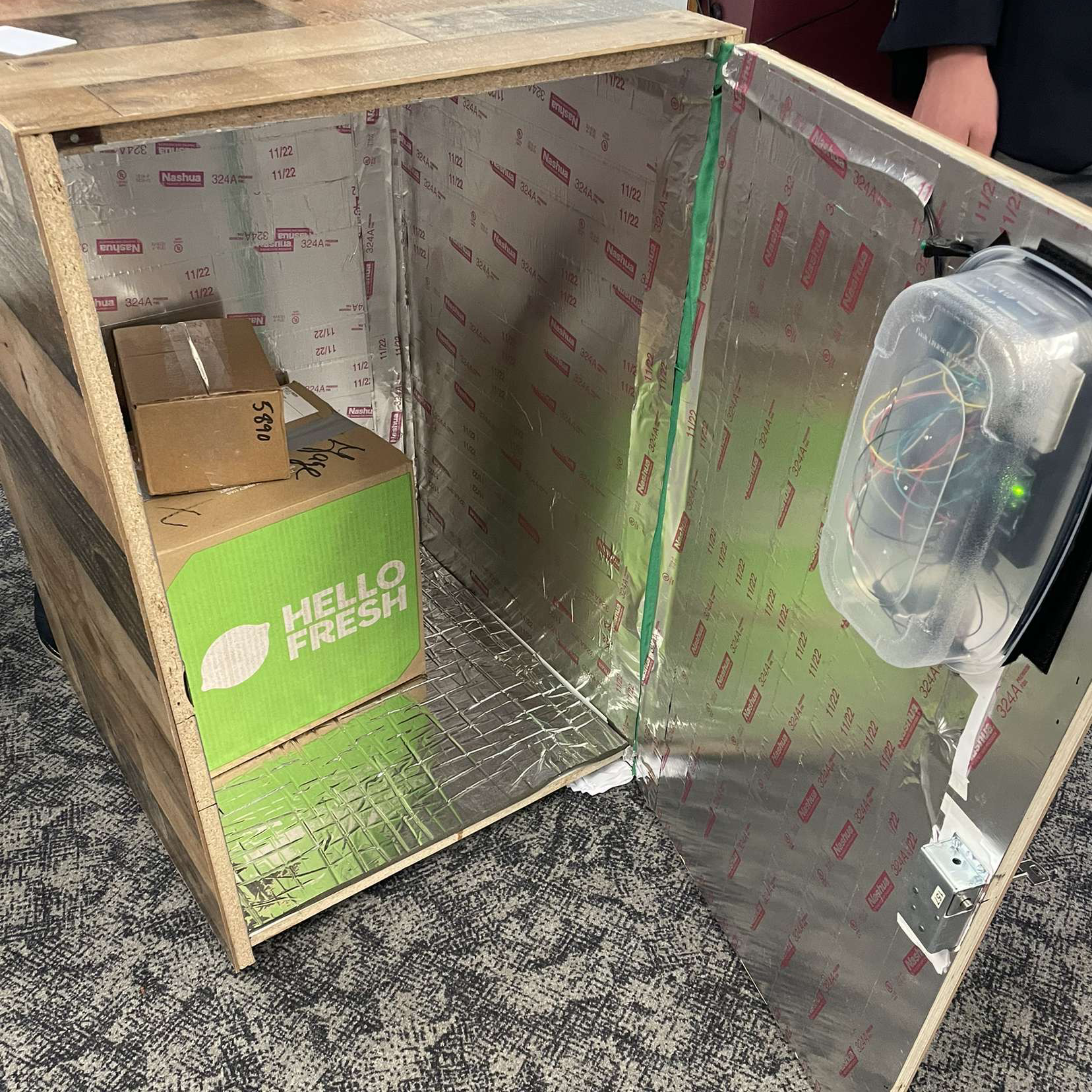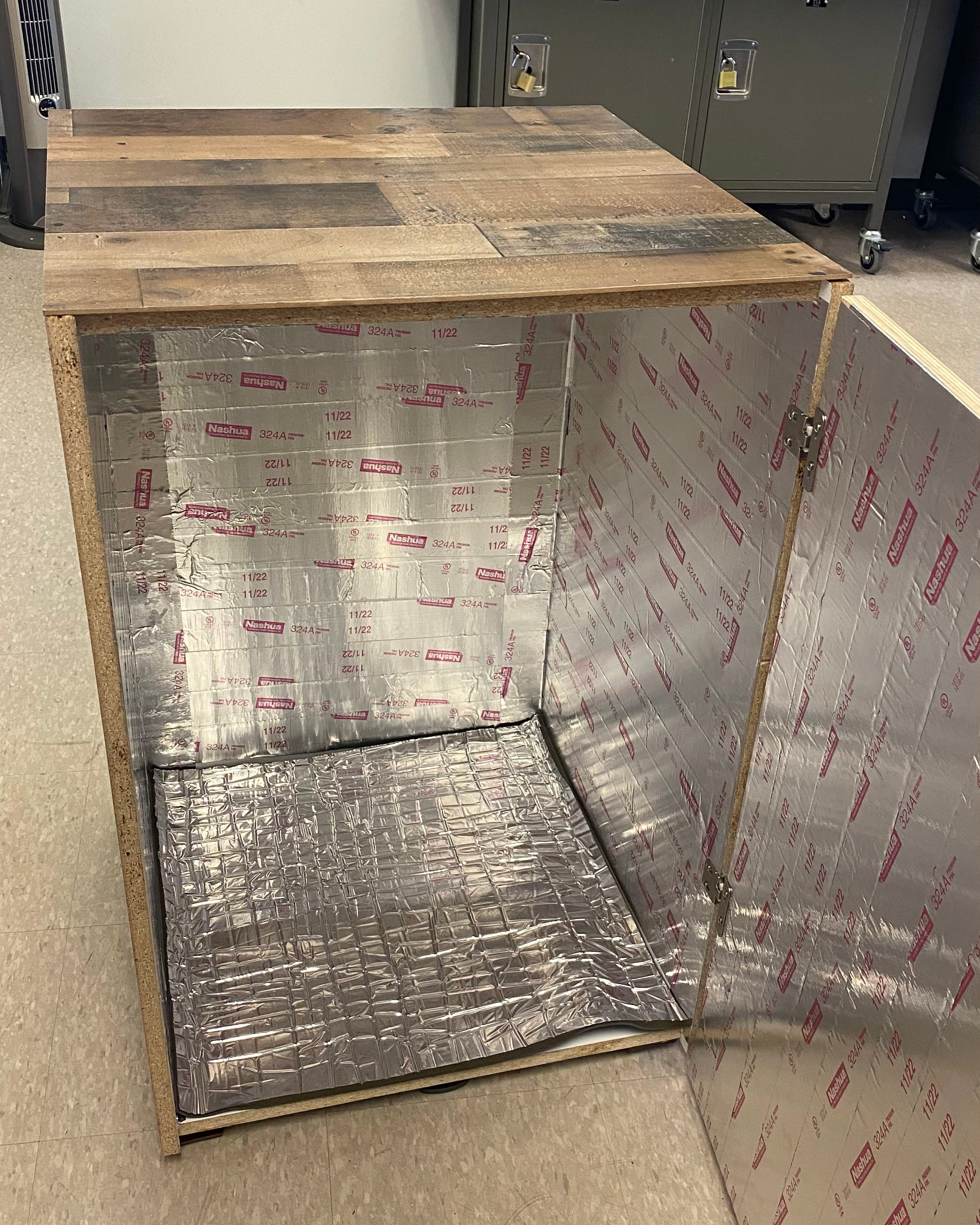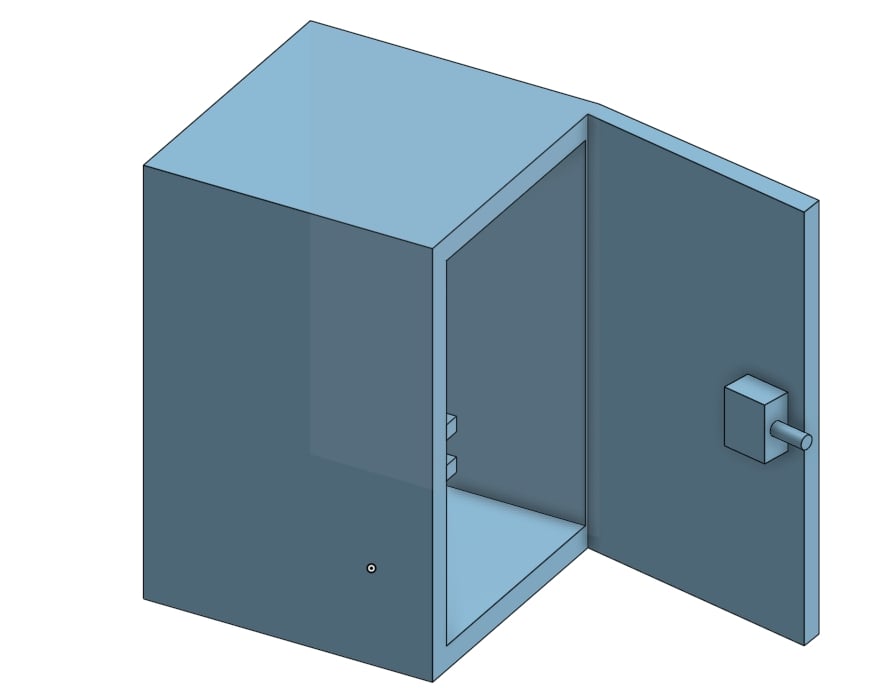Overview of Design Process
Design Decisions
- 12V Solenoid Lock: Chosen for energy efficiency, the lock stays secured without power, adding theft protection even when unplugged.
- RFID System: Essential for our product, the RFID system lets delivery drivers access the crate using exclusive keys, offering a swift and unique solution compared to traditional keys.
- Insulation & Padding: Top priority was protecting temperature-sensitive packages. The insulated crate guards against extreme temperatures, while foam padding at the bottom safeguards fragile items.
- Aesthetics: Wooden siding gives a polished look, seamlessly integrating with front porch aesthetics. Future plans include various design options for customer customization.
- Power: Transitioning from battery to a wall outlet enhances longevity and reliability, eliminating the need for frequent battery replacements. (details in testing/analysis section)
Technical Analysis
Analysis, Testing, and Challenges
To create our circuit, we initially designed an RFID circuit activating an LED upon successful scan. We then integrated a solenoid lock for independent function. Choosing a power source posed challenges—originally a nine-volt battery fell short on amps for the solenoid. Considering a twelve-volt battery, we faced design constraints. The RFID circuit's power consumption led us to a 12V-2A AC-DC wall plug, addressing power needs for the solenoid and eliminating frequent battery changes.
After completing crate construction, tests were conducted for robustness and user-friendliness. Time constraints limited data collection for homeowner market validation. To address this, surveys will gauge homeowner interest. Recognizing the need for durability, future iterations will explore heavier materials like metal. Acknowledging manufacturing errors, despite quality assurance, we recognize the box's structural integrity might be affected. Our product acts as a proof of concept, showcasing RFID technology's potential to enhance security in the delivery industry.
Notably, weatherproofing is an area requiring improvement in the box. Prioritizing size and shape over material choice, we opted for wood, which may warp in moisture, risking structural integrity and door malfunction. To address this, we plan to test the box's temperature stability by placing a thermometer inside and exposing it to varying temperatures.
In summary, the construction process encompassed designing an RFID circuit, integrating a solenoid lock, choosing a power source, and conducting tests for robustness and user-friendliness. Acknowledging room for improvement, particularly in weatherproofing and durability, we are dedicated to exploring innovative solutions to enhance the overall quality of the box.
Personal Contributions
Individual vs. Team
Team roles focused on maximizing learning. Despite my usual electronics role, I led crate construction, emphasizing insulation and sleek wood siding. We split into two groups for simultaneous work, with me coordinating and documenting design changes. Other team members focused on circuitry, solenoid-RFID integration, and coding crate unlocking. Collaboration ensured successful product implementation.
CAD / Schematics
Code Flow Chart
Conclusion
Future Work / Lessons Learned
Our project works as proof of concept for a secure delivery solution that can help protect packages from theft during the drop-off and retrieval process. While we had some budgetary limitations during the construction phase, our team was able to successfully design and build a functioning security box that demonstrates the effectiveness of RFID technology in preventing package theft.
As we continue to refine and improve our design, we recognize the importance of constructing the box with more durable materials, including a sturdy metal construction, to ensure that it can withstand harsh weather conditions and potential break-in attempts. We also believe that our solution has the potential to be integrated into the services of delivery companies, providing an additional layer of security for their customers.
To cater to the diverse needs of homeowners and businesses, we plan to offer a range of sizes and aesthetics for the security box, so that it can be customized to fit each individual's unique requirements. Overall, we are confident that our project has the potential to make a significant impact in the package delivery industry and provide a much-needed solution to the ongoing problem of package theft.
Bill of Materials
-
Solenoid: $30
-
RFID Components: $55
-
Circuit Components: $20
-
Insulation: $20
-
Hinges: $5
-
Wood Siding: $40
-
Hardware: $30
Timeline













